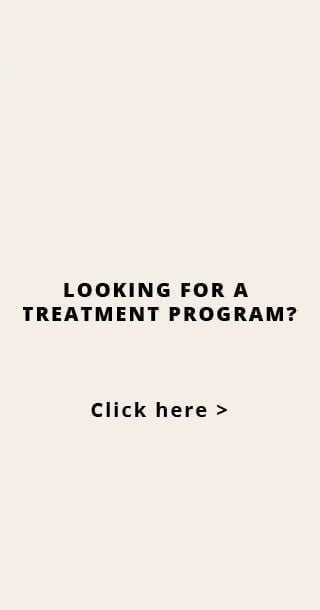Estimated reading time: 33 minute(s)
Shopping seems to be an enjoyable and harmless activity that people indulge in from time to time. However, some individuals may develop an obsession leading to a full-blown spending addiction that costs them everything. While experts were unclear about what spending addiction is and whether or not it is treatable, the research around this topic has grown more sophisticated in the past few years. Moreover, various treatments now exist to help people get stable and enjoy life without compulsions.
Common Shopping Addiction Symptoms
Following are the warning signs of a shopping addiction:
- Always thinking about things that you plan to buy
- Experiencing a euphoric rush after purchasing something
- Inability to stop spending compulsively
- Feeling guilty or regretful after purchasing something
- Lying about things you have purchased or hiding them from others
- Experiencing financial problems or getting deep in debt due to continuous shopping
- Purchasing things without any need
- Setting up new credit cards without paying off the balances on the older ones
- Shopping under stress or gloom
- Borrowing money to spend on shopping sprees
- Feeling upset or anxious when not able to go shopping
- Missing school, work, or other essential commitments to go shopping
In general, people who struggle with spending addiction waste more time and money on shopping than they can afford to. As a result, they may end up slipping into financial issues secondary to overspending.
What is Shopping Addiction: Are There Any Types?
Shopping addiction can hit different people differently: some people may focus their attention and efforts on one type of product, while others may be lured by any product at all. For example, one addict may focus on collecting tech products while another may collect bags or clothes. Grocery shopping is also an area of interest for several compulsive shoppers. Just like with every other type of addiction, shopping or spending addiction can hit everyone differently.
Generally, experts have formed certain informal categories of shopping addicts based on individual aspects of their behaviors. These categories include the following:
Bargain Seekers
This type of shopping addict will compulsively purchase products on sale or available at cost reductions. Such purchases help people experience a feeling of “winning” a good deal and satisfy their addiction.
Show-Offs
This type of addict consistently tries to put their money into high-value purchases as they closely link their self-worth to their ability to exhibit financial extravagance.
Trophy Hunters
Trophy hunters are always on the lookout for the best in the market. These products may not necessarily be the most expensive or rarest. This consistent quest often leads them to something that attracts them, giving them a high level of satisfaction in the end.
Collectors
These shopping addicts are focused on collecting different versions or iterations of the same item, for example, different parts of a series or a set or similar items belonging to a particular product class. This type of addictive behavior is fueled by the desire to achieve completionism.
Self-Medicators
Self-medicators use shopping to fight off negative moods, stressful thoughts, and difficult situations. They may not pay much heed to whatever they are buying as long as it provides them with a sense of relief.
Shopping Bulimics
Just like people suffering from bulimia nervosa indulge in self-purging practices after filling them up with food to ensure that they do not get unnecessary calories, shopping bulimics follow a similar principle. Such compulsive buyers indulge in lots of mindless shopping followed by returning them to get refunds to ensure that their initial behaviors do not cost them any financial losses.
Causes of Shopping Addiction
While experts are not clear on what causes spending addiction, several factors may contribute to its development. These factors are explained below briefly.
Pre-Existing Mental Health Conditions
For most people, shopping addiction begins in the late teens or early adulthood years and often co-exists with other mental health disorders, such as anxiety, mood disorders, eating disorders, and personality disorders.
Personality Characteristics
The difficulty in controlling the urge to shop abundantly can emerge from an underlying personality pattern that many shopaholics share. Many such people have low self-esteem and are kindhearted, polite to others, sympathetic, isolated, and easy to influence. Many of these people acquire a shopping addiction as they try to improve their self-esteem.
Materialism
Many people with spending addiction are more materialistic than others and may try to prop themselves up by using material objects. They often engage in fantasy more commonly than others and have a difficult time resisting their impulses.
Exposure to Advertising
People suffering from shopping addiction are more susceptible to advertising and marketing messages that surround them every day. Many of these marketing strategies are, hence, intentionally designed in a way to trigger impulse buying in people, especially those with an impulsive nature with an underlying risk of developing a shopping addiction.
Retail Therapy
As with other types of addictions, spending or shopping addiction is often a way to cope with the everyday difficulties and emotional pain. While many believe that shopping brings them comfort and joy, it, unfortunately, makes things worse than what they were initially. People who shop to escape negative feelings and gain pleasure call it “retail therapy” for themselves. This phrase indicates that they get the same benefit in buying something new that they would get by participating in therapy or counseling. However, this is an unhelpful and incorrect idea that can only lead to more damage than making things better.
Although a new purchase may solve a problem in certain cases, it can never be considered as retail therapy. For most people, doing so only exacerbates the financial burden they are already experiencing, making things worse for them.
The Long-Term Effects of Compulsive Spending & Shopping
Experiencing a compulsive urge to spend and shop can have a dramatically destructive effect on life. These effects may also extend to their loved ones and impact them negatively. While the new purchases may give a shopper an initial rush of dopamine and endorphins, these feelings are mostly temporary and may turn to shame, anxiety, and guilt soon after the purchase. To overcome these feelings of guilt and shame, many returns to the shops to spend more money. As a result, many people trap themselves in this never-ending cycle that becomes impossible to break from.
When an individual becomes addicted to shopping, they may acquire the following effects as an aftermath:
Financial Strain
Consistent expenditure on purchasing new things may force shopping addicts to take on debts from credit cards, loans, and overdrafts, pushing them into a deeper financial strain that affects them negatively.
Relationship Issues
Shopping addiction can cause a significant negative impact on a person’s close relationships due to various reasons, such as isolation, secrecy, and emotional pain caused by this addiction. Moreover, the financial strain secondary to this addictive behavior may also affect family life, putting pressure on others to earn more and compensate for it.
Worsening Mental Health
Addiction can negatively affect mental health, making a person feel stressed, sad, and anxious. For people who are using shopping as a way to manage their difficult emotions, this addiction can make them feel depressed or worse with time.
When to Get Help for Spending Addiction
Fortunately, compulsive shopping responds well to different types of treatments, such as the following:
- Medications
- Self-help books and support groups
- Financial counseling
- Psychotherapy, such as cognitive behavioral therapy (CBT)
Many shopaholics have been found to have certain personality characteristics that help them develop and respond positively to a therapeutic relationship which, in turn, increases their chances of a successful treatment experience. Medications can also help with recovery to a certain extent, however, remember that they are not a sole or a highly reliable treatment method.
Psychotherapy
Psychotherapy can help compulsive shoppers understand the emotional roots of their underlying spending addiction. Moreover, it can also encourage them to find different ways to positively cope with their shopping addiction which helps them recover faster and more efficiently. Shopping addiction can hurt close relationships and psychotherapeutic support can help address these issues by bringing all loved ones together and restoring trust and confidence. Moreover, patients also learn how to connect with others in ways that do not solely revolve around finances.
Financial Counseling
Depending on how severe the underlying shopping addiction is, some people may benefit from financial counseling. This type of counseling is particularly beneficial for those who have acquired lots of debt by constantly spending more money than they make. Such people can make an appointment with a financial consultant or adviser at the bank to discuss different options for restricting their access to quick and easy spending. Moreover, they can also talk about various strategies to pay off bank charges and debts and consider putting their money into less accessible accounts so that they have nothing in hand to fuel their addictive behaviors.
Shopping Addiction Help: How to Cope on Your Own
If you or a loved one has been displaying all the classic shopaholic symptoms, they might be experiencing spending addiction. Overcoming this addiction or any other type of addiction for that matter involves learning alternative, healthier ways to handle everyday stress. While some people can accomplish this on their own, others greatly benefit from therapy or counseling.
In addition to engaging in professional treatment, there is a lot you can do to reduce the harm associated with compulsive spending and to keep the problem under control. Some of these tips are mentioned below.
- Focus on developing other coping strategies and find alternative ways to enjoy your free type instead of using it to shop more.
- Find someone in your circle, such as a family member or a helpful friend, who can take responsibility for your everyday essentials shopping. This can be done temporarily for as long as you seek professional help for shopping addiction.
- Get rid of all credit cards and make your everyday purchases with a small amount of emergency cash that you keep on you. This limited access to finances can help you control your urge for impulsive purchases.
- Avoid shopping with people who shop compulsively. Find friends or relatives who are good with financial management and can encourage you to control your overspending habits.
FAQs
What is the difference between a normal shopping spree and a shopping addiction?
As with other types of addictions, what sets spending addiction apart from normal shopping sprees is the behavior that a person adopts to primarily cope with everyday stressors. As a part of normal shopping, an individual may only purchase items that they need and are likely to use with no sense of compulsion. Moreover, their daily expenditures are well in control and do not cause financial distress. They may indulge in spending splurges but they are infrequent and rather occasional. Shopping addiction, on the other hand, may force a person to buy items they do not need or ever use simply due to an underlying compulsive behavior. This constant overbuying attitude creates significant financial problems not only for them but also for their loved ones.
Is shopping addiction a type of real addiction?
Unfortunately, the Diagnostic and Statistical Manual of Mental Disorders (DSM-5) does not recognize shopping addiction as a distinct condition. Despite a long history of existence, it still remains controversial with many experts and the public disagreeing to consider it a real addiction. Some experts also believe shopping addiction to be a part of obsessive-compulsive disorder (OCD), mood disorder, or impulse control disorder, while others categorize it with other behavioral addictions, such as gambling disorder.
How common is shopping addiction?
According to statistics, up to six percent of the population in the United States suffers from spending addiction. The prevalence is a bit higher in women than in men. The global prevalence continues to increase with every passing day.


